
|
It is expected to brighten up to 7 mag, and it will be observable in good condition in winter. Now it is 9.6 mag (Nov. 20, Osamu Miyazaki). It will turn to fade out rapidly after brightening. In the Northern Hemisphere, it stays observable in good condition.
Date(TT) R.A. (2000) Decl. Delta r Elong. m1 Best Time(A, h)
Nov. 25 9 19.79 19 19.1 0.641 1.315 105 8.8 5:06 ( 0, 74)
Dec. 2 9 47.33 18 15.4 0.606 1.294 106 8.2 5:06 ( 0, 73)
|
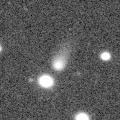
|
It is expected to brighten up to 7 mag in early 2024. Now it is 11.2 mag (Nov. 25, Marco Goiato). Brightening gradually. It stays extremely low in the Northern Hemisphere. But it will become high in winter. It locates somewhat low in the Southern Hemisphere. But it will become high in winter. The brightness evolution slowed down since May.
Date(TT) R.A. (2000) Decl. Delta r Elong. m1 Best Time(A, h)
Nov. 25 12 40.32 -39 40.0 2.305 1.776 46 9.3 5:14 (325, 3)
Dec. 2 13 3.84 -39 58.2 2.225 1.713 47 9.1 5:20 (327, 4)
|

|
It approached to Earth down to 0.2 a.u. in early November, and brightened up to 6.2 mag (Nov. 11, Marco Goiato). Now it is 8.6 mag (Nov. 27, Osamu Miyazaki). It will fade out rapidly after this. In the Northern Hemisphere, it will be unobservable in January. In the Southern Hemisphere, it will be getting lower gradually.
Date(TT) R.A. (2000) Decl. Delta r Elong. m1 Best Time(A, h)
Nov. 25 21 52.86 -33 33.9 0.538 1.016 77 9.7 18:18 ( 9, 21)
Dec. 2 22 19.01 -37 52.5 0.769 1.079 74 10.8 18:18 ( 8, 16)
|
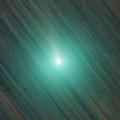
|
It approached to Earth down to 0.38 a.u., and brightened up to 8.0 mag in autumn (Sept. 29, Virgilio Gonano). Now it is 10.2 mag (Nov. 24, Carlos Labordena). It will fade out rapidly after this. It stays observable in good condition.
Date(TT) R.A. (2000) Decl. Delta r Elong. m1 Best Time(A, h)
Nov. 25 9 1.95 -6 47.1 0.549 1.218 101 10.4 4:48 ( 0, 48)
Dec. 2 9 4.95 -9 22.4 0.569 1.265 105 10.8 4:24 ( 0, 46)
|
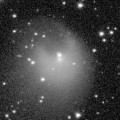
|
It returns for the first time in 70 years. It will brighten up to 4.5 mag in 2024 spring. It suddenly brightened in outburst by 5 mag up to 11.5 mag on July 20 (E. Tamas, Francois Kugel). It brightened again in another outburst up to 11.7 mag on Oct. 5 (Richard Miles). Another outburst occured on Nov. 14 (Nick James). Now it is 8.9 mag (Nov. 27, Osamu Miyazaki). It will brighten rapidly after this. In the Northern Hemisphere, it will be getting lower gradually. In the Southern Hemisphere, it is not observable now.
Date(TT) R.A. (2000) Decl. Delta r Elong. m1 Best Time(A, h)
Nov. 25 18 15.52 39 7.4 2.664 2.463 67 11.1 18:18 (115, 39)
Dec. 2 18 27.92 38 35.9 2.593 2.378 66 11.1 18:18 (115, 37)
|

|
Now it is 10.3 mag (Nov. 3, Hiroshi Abe). Fading gradually. In the Northern Hemisphere, it will be unobservable in January. In the Southern Hemisphere, it will be getting lower gradually. But it will be getting higher again after March.
Date(TT) R.A. (2000) Decl. Delta r Elong. m1 Best Time(A, h)
Nov. 25 23 31.07 -43 3.3 2.970 3.153 91 11.4 19:15 ( 0, 12)
Dec. 2 23 24.94 -42 51.4 3.141 3.205 84 11.5 18:42 ( 0, 12)
|

|
It brightened up to 8 mag from 2022 summer to 2023 spring. Now it is 12.0 mag (Nov. 24, Osamu Miyazaki). Fading slowly. It stays observable in good condition.
Date(TT) R.A. (2000) Decl. Delta r Elong. m1 Best Time(A, h)
Nov. 25 6 17.50 -7 2.4 3.515 4.284 136 12.3 2:05 ( 0, 48)
Dec. 2 6 10.02 -6 29.6 3.522 4.347 142 12.4 1:30 ( 0, 48)
|
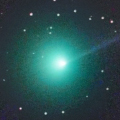
|
It brightened up to 8.1 mag in autumn (Oct. 10, Juan Jose Gonzalez). Fading rapidly. It will be fainter than 18 mag in January. It will never be observable after this.
Date(TT) R.A. (2000) Decl. Delta r Elong. m1 Best Time(A, h)
Nov. 25 16 51.51 -27 25.2 1.777 0.850 13 12.4 18:18 ( 64,-12)
Dec. 2 17 26.69 -28 7.9 1.894 0.970 14 13.5 18:18 ( 63,-11)
|
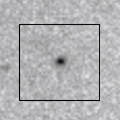
|
It is expected to brighten up to 8.5 mag from January to February. Now it is 14.2 mag (Nov. 15, Thomas Lehmann). Brightening rapidly. It stays observable in good condition. It is fainter than this ephemeris recently.
Date(TT) R.A. (2000) Decl. Delta r Elong. m1 Best Time(A, h)
Nov. 25 2 49.78 17 39.4 0.594 1.565 163 13.6 22:33 ( 0, 73)
Dec. 2 2 48.09 16 42.9 0.580 1.532 155 13.2 22:04 ( 0, 72)
|

|
Now it is 13.7 mag (Nov. 15, Hiroshi Abe). It stays 14 mag for a while. It stays extremely low in the Northern Hemisphere. In the Southern Hemisphere, it stays observable in good condition.
Date(TT) R.A. (2000) Decl. Delta r Elong. m1 Best Time(A, h)
Nov. 25 10 40.32 -33 27.8 4.431 4.210 70 13.2 5:14 (344, 19)
Dec. 2 10 36.47 -35 10.9 4.364 4.241 76 13.2 5:20 (352, 19)
|

|
It brightened up to 7.8 mag in late July (July 20, Thomas Lehmann). Now it is 12.9 mag (Oct. 3, Chris Wyatt). Fading slowly. In the Northern Hemisphere, it will be unobservable in December. But it will be observable again in December. In the Southern Hemisphere, it is not observable now, but it will appear in December.
Date(TT) R.A. (2000) Decl. Delta r Elong. m1 Best Time(A, h)
Nov. 25 15 10.78 -9 16.2 3.097 2.168 16 13.3 5:14 (280, -2)
Dec. 2 15 12.77 -8 42.9 3.110 2.234 22 13.5 5:20 (284, 5)
|
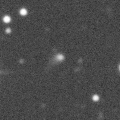
|
Now it is 13.9 mag (Nov. 14, Toshihiko Ikemura, Hirohisa Sato). Brightening slowly. It stays observable in good condition. It is expected to brighten up to 12 mag from 2024 to 2025.
Date(TT) R.A. (2000) Decl. Delta r Elong. m1 Best Time(A, h)
Nov. 25 9 39.17 7 11.8 4.256 4.491 97 13.5 5:14 (354, 62)
Dec. 2 9 36.05 7 58.2 4.092 4.457 105 13.4 4:55 ( 0, 63)
|
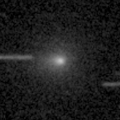
|
It brightened up to 12.6 mag in autumn (Oct. 3, Chris Wyatt). Now it is 13.7 mag (Nov. 2, Ken-ichi Kadota). It will fade out rapidly after this. It will be fainter than 18 mag in March. In the Northern Hemisphere, it stays observable in good condition. It locates somewhat low in the Southern Hemisphere.
Date(TT) R.A. (2000) Decl. Delta r Elong. m1 Best Time(A, h)
Nov. 25 20 23.86 -1 59.2 1.257 1.256 66 13.5 18:18 ( 46, 43)
Dec. 2 20 57.82 -0 55.1 1.312 1.318 68 13.8 18:18 ( 45, 44)
|

|
Now it is 13 mag (Nov. 22, Giuseppe Pappa). It stays observable in good condition.
Date(TT) R.A. (2000) Decl. Delta r Elong. m1 Best Time(A, h)
Nov. 25 8 43.90 20 29.2 5.685 6.156 114 13.7 4:31 ( 0, 75)
Dec. 2 8 43.38 20 28.9 5.587 6.158 121 13.7 4:03 ( 0, 75)
|

|
It brightened up to 8.3 mag in 2021-2022 winter (Jan. 6, 2022, Toshiyuki Takahashi). Now it is 13.2 mag (July 14, Chris Wyatt). It stays 14 mag for a while. It stays extremely low in the Northern Hemisphere. In the Southern Hemisphere, it stays observable in good condition.
Date(TT) R.A. (2000) Decl. Delta r Elong. m1 Best Time(A, h)
Nov. 25 11 21.34 -44 30.6 7.207 6.790 61 14.0 5:14 (340, 6)
Dec. 2 11 23.92 -45 30.6 7.187 6.835 65 14.1 5:20 (346, 7)
|
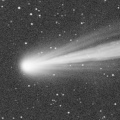
|
It approached to Sun down to 0.23 a.u. and brightened up to 2.5 mag in mid September (Sept. 18, Juan Jose Gonzalez). Now it is 11.5 mag (Nov. 22, Giuseppe Pappa). Fading rapidly. It will be fainter than 18 mag in January. In the Northern Hemisphere, it will be unobservable in January. In the Southern Hemisphere, it will be getting higher gradually. It is brighter than this ephemeris recently.
Date(TT) R.A. (2000) Decl. Delta r Elong. m1 Best Time(A, h)
Nov. 25 12 50.32 -40 26.0 2.183 1.637 44 14.3 5:14 (324, 1)
Dec. 2 12 46.66 -42 54.2 2.211 1.758 50 14.9 5:20 (331, 3)
|
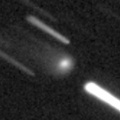
|
Now it is 14.9 mag (Sept. 18, Ken-ichi Kadota). Brightening slowly. Now it is not observable. It will appear in December. It is expected to brighten up to 12.5 mag in 2024 spring. At the high light, it will be observable in excellent condition in the Southern Hemisphere, but it will be low in the Northern Hemisphere.
Date(TT) R.A. (2000) Decl. Delta r Elong. m1 Best Time(A, h)
Nov. 25 15 21.94 -11 2.1 3.872 2.919 13 14.4 5:14 (280, -5)
Dec. 2 15 24.25 -12 16.2 3.811 2.892 18 14.4 5:20 (285, 0)
|

|
Now it is 15.0 mag (Nov. 15, ATLAS Chile). It stays 15 mag for a while. In the Northern Hemisphere, it is not observable now. In the Southern Hemisphere, it stays observable in good condition. It was expected to brighten up to 10 mag from spring to summer. However, it was fainter than originally expected.
Date(TT) R.A. (2000) Decl. Delta r Elong. m1 Best Time(A, h)
Nov. 25 11 30.05 -84 8.8 3.895 3.630 67 14.4 5:14 (357,-30)
Dec. 2 10 47.26 -85 34.2 3.920 3.665 67 14.5 5:20 (359,-31)
|

|
Now it is 15.1 mag (Nov. 17, ATLAS Chile). It stays 14 mag for a while. It stays extremely low in the Northern Hemisphere. In the Southern Hemisphere, it stays observable in good condition.
Date(TT) R.A. (2000) Decl. Delta r Elong. m1 Best Time(A, h)
Nov. 25 11 45.12 -33 59.8 5.920 5.451 57 14.7 5:14 (331, 14)
Dec. 2 11 50.29 -34 37.5 5.827 5.430 61 14.7 5:20 (337, 16)
|
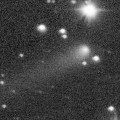
|
Now it is 14.7 mag (Nov. 1, Ken-ichi Kadota). Fading slowly. It will be getting lower gradually after this, and it will be unobservable in January in the Southern Hemisphere, or in February in the Northern Hemisphere. But it will be observable again in March in the Northern Hemisphere.
Date(TT) R.A. (2000) Decl. Delta r Elong. m1 Best Time(A, h)
Nov. 25 22 44.49 3 3.3 3.335 3.661 101 14.8 18:29 ( 0, 58)
Dec. 2 22 39.38 3 1.0 3.502 3.692 93 14.9 18:18 ( 10, 58)
|

|
Now it is 14.2 mag (Nov. 15, Ken-ichi Kadota). It stays 15 mag for a while. In the Northern Hemisphere, it stays observable in good condition.
Date(TT) R.A. (2000) Decl. Delta r Elong. m1 Best Time(A, h)
Nov. 25 2 59.52 16 37.1 1.431 2.399 165 14.8 22:43 ( 0, 72)
Dec. 2 2 53.73 16 51.1 1.430 2.368 156 14.8 22:10 ( 0, 72)
|

|
It will approach to Sun down to 0.4 a.u. in late September in 2024, and it is expected to brighten up to 0 mag. Now it is 15.3 mag (Sept. 10, A. Ivanov et al.). It will brighten rapidly after this. In the Northern Hemisphere, it will be getting higher gradually. In the Southern Hemisphere, it is not observable now, but it will appear in December. At the high light, in the Northern Hemisphere, it will be observable in good condition after the perihelion passage. In the Southern Hemisphere, it will be observable in the low sky before and after the perihelion passage.
Date(TT) R.A. (2000) Decl. Delta r Elong. m1 Best Time(A, h)
Nov. 25 14 42.17 -5 34.8 5.540 4.656 24 14.9 5:14 (281, 6)
Dec. 2 14 46.02 -5 58.4 5.411 4.580 29 14.8 5:20 (286, 12)
|
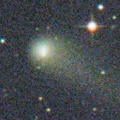
|
It brightened up to 11.1 mag in early 2022 (Mar. 31, 2022, F. Kugel, J.-G. Bosch, J. Nicolas). Now it is 14.3 mag (Nov. 3, Hiroshi Abe). It stays 15 mag for a while. In the Northern Hemisphere, it will be getting higher gradually. In the Southern Hemisphere, it is not observable now, but it will appear in February.
Date(TT) R.A. (2000) Decl. Delta r Elong. m1 Best Time(A, h)
Nov. 25 16 30.20 15 41.3 6.793 6.034 37 15.0 18:18 (103, 8)
Dec. 2 16 36.26 15 45.9 6.823 6.072 37 15.1 18:18 (106, 4)
|

|
The ATLAS search program detected its cometary activity in April. It continues to be brightening even after the perihelion passage. Now it is 14.2 mag (Nov. 8, Thomas Lehmann). It will fade out rapidly after this. It will be fainter than 18 mag in February. In the Northern Hemisphere, it stays observable in good condition. In the Southern Hemisphere, it will be getting lower gradually.
Date(TT) R.A. (2000) Decl. Delta r Elong. m1 Best Time(A, h)
Nov. 25 23 36.83 -19 51.8 3.025 3.401 103 15.1 19:21 ( 0, 35)
Dec. 2 23 40.20 -18 41.8 3.157 3.442 98 15.4 18:57 ( 0, 37)
|

|
Now it is 15.9 mag (Nov. 17, ATLAS Chile). Fading gradually. In the Northern Hemisphere, it will be getting higher gradually. In the Southern Hemisphere, it will be getting lower gradually after this, and it will be unobservable in March.
Date(TT) R.A. (2000) Decl. Delta r Elong. m1 Best Time(A, h)
Nov. 25 0 38.90 -35 0.3 1.247 1.799 106 15.3 20:23 ( 0, 20)
Dec. 2 0 36.93 -30 0.1 1.278 1.790 103 15.3 19:53 ( 0, 25)
|
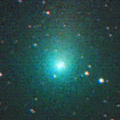
|
It brightened up to 9.5 mag from last winter to early spring (Jan. 30, Katsumi Yoshimoto). Now it is 14.9 mag (Nov. 15, Thomas Lehmann). Fading gradually. It will be fainter than 18 mag in March. It will be getting lower gradually after this, and it will be unobservable in February.
Date(TT) R.A. (2000) Decl. Delta r Elong. m1 Best Time(A, h)
Nov. 25 22 33.02 -11 48.1 3.549 3.740 93 15.3 18:18 ( 0, 43)
Dec. 2 22 34.20 -12 32.2 3.738 3.804 86 15.6 18:18 ( 9, 42)
|

|
David Rankin detected its cometary activity in June. Now it is 15.7 mag (Nov. 13, Toshihiko Ikemura, Hirohisa Sato). Fading gradually. In the Northern Hemisphere, it stays observable in good condition. In the Southern Hemisphere, it will be getting lower gradually after this, and it will be unobservable in March.
Date(TT) R.A. (2000) Decl. Delta r Elong. m1 Best Time(A, h)
Nov. 25 22 40.15 -2 8.6 1.753 2.137 98 15.6 18:25 ( 0, 53)
Dec. 2 22 49.73 -1 23.7 1.820 2.130 94 15.7 18:18 ( 4, 54)
|
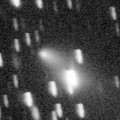
|
It brightened up to 13.6 mag in summer (July 16, Mitsunori Tsumura). Now it is 14.9 mag (Nov. 6, Thomas Lehmann). It will fade out rapidly after this. It will be fainter than 18 mag in February. In the Northern Hemisphere, it stays observable in good condition. In the Southern Hemisphere, it will never be observable after this.
Date(TT) R.A. (2000) Decl. Delta r Elong. m1 Best Time(A, h)
Nov. 25 23 16.47 68 2.6 1.662 2.277 116 15.7 19:00 (180, 57)
Dec. 2 23 14.87 67 3.4 1.735 2.322 114 15.9 18:31 (180, 58)
|

|
It has not been observed yet in this apparition. It was expected to brighten rapidly up to 15 mag in summer. But actually, it is not detected, fainter than 18 mag (Oct. 14, Martin Masek). Fading slowly. It will be unobservable in January in the Southern Hemisphere, or in February in the Northern Hemisphere.
Date(TT) R.A. (2000) Decl. Delta r Elong. m1 Best Time(A, h)
Nov. 25 19 59.43 -18 51.0 2.358 1.983 56 15.8 18:18 ( 40, 25)
Dec. 2 20 15.32 -17 39.0 2.419 1.987 52 15.9 18:18 ( 44, 25)
|

|
Now it is 14.3 mag (July 7, Thomas Lehmann). It stays 16 mag for a while. In the Northern Hemisphere, it is not observable now, but it will appear in January. In the Southern Hemisphere, it will be getting higher gradually.
Date(TT) R.A. (2000) Decl. Delta r Elong. m1 Best Time(A, h)
Nov. 25 14 53.44 -48 54.6 3.946 3.145 31 16.0 5:14 (316,-21)
Dec. 2 15 6.37 -48 48.7 3.999 3.202 31 16.0 5:20 (318,-18)
|
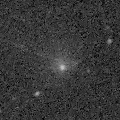
|
Very large comet. It is expected to brighten up to 13 mag in 2031. Now it is 16.4 mag (Nov. 13, ATLAS South Africa). It stays 16 mag for a while. In the Northern Hemisphere, it is not observable now. In the Southern Hemisphere, it stays observable in good condition. In the Northern Hemisphere, it is not observable until 2030.
Date(TT) R.A. (2000) Decl. Delta r Elong. m1 Best Time(A, h)
Nov. 25 3 8.30 -66 3.7 16.903 16.980 92 16.0 22:51 ( 0,-11)
Dec. 2 3 5.25 -66 2.6 16.915 16.955 90 16.0 22:20 ( 0,-11)
|

|
Now it is 16.2 mag (Nov. 15, Toshihiko Ikemura, Hirohisa Sato). It stays 16 mag for a while. In the Northern Hemisphere, it will be unobservable in March. In the Southern Hemisphere, it stays observable in good condition. The brightness evolution is slower than originally expected.
Date(TT) R.A. (2000) Decl. Delta r Elong. m1 Best Time(A, h)
Nov. 25 2 20.06 -25 7.5 2.953 3.647 128 16.1 22:03 ( 0, 30)
Dec. 2 2 11.65 -26 31.8 2.993 3.603 121 16.1 21:27 ( 0, 28)
|
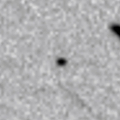
|
It will approach to Earth down to 0.2 a.u. from February to March, and it is expected to brighten up to 13 mag. Now it is 18.1 mag (Nov. 13, Toshihiko Ikemura, Hirohisa Sato). It will brighten rapidly after this. It stays observable in good condition.
Date(TT) R.A. (2000) Decl. Delta r Elong. m1 Best Time(A, h)
Nov. 25 23 52.12 -8 27.9 0.641 1.367 112 16.4 19:36 ( 0, 47)
Dec. 2 23 52.89 -10 0.2 0.630 1.300 104 16.1 19:10 ( 0, 45)
|
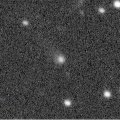
|
Now it is 16.8 mag (Nov. 11, ATLAS South Africa). It stays 16 mag for a while. In the Northern Hemisphere, it will never be observable after this. In the Southern Hemisphere, it stays observable in good condition.
Date(TT) R.A. (2000) Decl. Delta r Elong. m1 Best Time(A, h)
Nov. 25 9 37.17 -55 24.4 3.846 3.738 76 16.2 5:14 (359, 0)
Dec. 2 9 31.93 -58 18.1 3.812 3.747 78 16.1 4:51 ( 0, -3)
|

|
Fading gradually. It will be fainter than 18 mag in January. In the Northern Hemisphere, it stays observable in good condition. It stays extremely low in the Southern Hemisphere.
Date(TT) R.A. (2000) Decl. Delta r Elong. m1 Best Time(A, h)
Nov. 25 19 48.96 2 49.8 0.859 0.940 60 16.2 18:18 ( 59, 41)
Dec. 2 20 35.44 5 23.5 0.957 1.057 65 16.4 18:18 ( 57, 46)
|
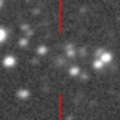
|
Now it is 17.3 mag (Nov. 14, ATLAS Chile). Fading slowly. It will be unobservable in January. But it will be observable again in March in the Southern Hemisphere.
Date(TT) R.A. (2000) Decl. Delta r Elong. m1 Best Time(A, h)
Nov. 25 19 46.55 -34 8.6 3.528 3.013 51 16.2 18:18 ( 34, 11)
Dec. 2 19 58.89 -33 51.7 3.608 3.026 47 16.3 18:18 ( 37, 9)
|
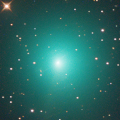
|
It brightened up to 8.4 mag in late July (July 22, Thomas Lehmann). Now it is 18.4 mag (Nov. 15, Toshihiko Ikemura, Hirohisa Sato). Fading rapidly. It will be fainter than 18 mag in January. It locates somewhat low in the Northern Hemisphere. In the Southern Hemisphere, it will be getting lower gradually. Thomas Lehmann reported it was bright as 13.9 mag on Nov. 8.
Date(TT) R.A. (2000) Decl. Delta r Elong. m1 Best Time(A, h)
Nov. 25 23 16.63 -24 37.6 2.045 2.386 97 16.3 19:01 ( 0, 31)
Dec. 2 23 24.46 -24 4.0 2.213 2.465 92 16.7 18:42 ( 0, 31)
|

|
It approached to Earth down to 0.29 a.u. in early February, and it brightened up to 4.5 mag (Feb. 1, Juan Jose Gonzalez). Now it is 16.1 mag (Nov. 15, ATLAS Chile). Fading slowly. It will be fainter than 18 mag in March. In the Northern Hemisphere, it will never be observable after this. In the Southern Hemisphere, it stays observable in good condition.
Date(TT) R.A. (2000) Decl. Delta r Elong. m1 Best Time(A, h)
Nov. 25 4 59.13 -62 28.9 4.050 4.270 96 16.3 0:46 ( 0, -7)
Dec. 2 4 40.38 -62 52.7 4.138 4.341 95 16.5 23:54 ( 0, -8)
|

|
It brightened up to 11.8 mag in summer (June 17, Osamu Miyazaki). Now it is 16.5 mag (Nov. 14, Toshihiko Ikemura, Hirohisa Sato). It will fade out rapidly after this. It will be fainter than 18 mag in January. In the Northern Hemisphere, it will be getting lower gradually. In the Southern Hemisphere, it will be unobservable in January.
Date(TT) R.A. (2000) Decl. Delta r Elong. m1 Best Time(A, h)
Nov. 25 21 2.64 -2 35.7 2.533 2.480 75 16.4 18:18 ( 34, 47)
Dec. 2 21 13.59 -2 13.5 2.642 2.509 71 16.7 18:18 ( 40, 45)
|
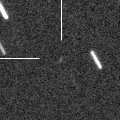
|
It is expected to brighten up to 16 mag in winter. Now it is 17.7 mag (Nov. 14, Toshihiko Ikemura, Hirohisa Sato). It stays 17 mag for a while. In the Northern Hemisphere, it will be getting lower gradually. In the Southern Hemisphere, it will be getting higher gradually. It is fainter than this ephemeris recently.
Date(TT) R.A. (2000) Decl. Delta r Elong. m1 Best Time(A, h)
Nov. 25 11 53.86 1 4.5 2.316 2.081 63 16.5 5:14 (307, 42)
Dec. 2 11 51.56 -1 53.7 2.206 2.093 70 16.4 5:20 (319, 45)
|

|
Now it is 16.2 mag (Nov. 18, Giuseppe Pappa). Fading slowly. It will be unobservable in January. But it will be observable again in February.
Date(TT) R.A. (2000) Decl. Delta r Elong. m1 Best Time(A, h)
Nov. 25 23 38.86 -36 45.4 0.733 1.289 95 16.4 19:20 ( 0, 18)
Dec. 2 22 48.46 -38 39.9 0.881 1.202 79 16.5 18:18 ( 3, 16)
|

|
New peridic comet which brightened up to 16 mag in 2007. It has not been recovered yet. It was missed in 2013 and 2018. It will approach to Earth down to 0.34 a.u. in winter, and it is expected to brighten up to 16 mag. It will fade out rapidly after this. It will be fainter than 18 mag in January. In the Northern Hemisphere, it will be getting higher gradually. It stays extremely low in the Southern Hemisphere.
Date(TT) R.A. (2000) Decl. Delta r Elong. m1 Best Time(A, h)
Nov. 25 19 0.29 -19 39.8 0.655 0.667 42 16.7 18:18 ( 51, 16)
Dec. 2 19 34.57 -14 36.7 0.549 0.706 44 16.4 18:18 ( 54, 21)
|

|
Now it is 15.4 mag (Nov. 13, ATLAS Chile). Fading slowly. It will be fainter than 18 mag in March. In the Northern Hemisphere, it stays observable in good condition. In the Southern Hemisphere, it will be getting lower gradually after this, and it will be unobservable in March.
Date(TT) R.A. (2000) Decl. Delta r Elong. m1 Best Time(A, h)
Nov. 25 0 3.66 -7 45.9 3.274 3.803 115 16.6 19:48 ( 0, 47)
Dec. 2 0 4.30 -7 20.1 3.387 3.819 108 16.7 19:21 ( 0, 48)
|

|
Now it is 16.0 mag (Nov. 14, Toshihiko Ikemura, Hirohisa Sato). It stays 17 mag for a while. It stays observable in good condition.
Date(TT) R.A. (2000) Decl. Delta r Elong. m1 Best Time(A, h)
Nov. 25 4 48.11 -12 48.8 6.390 7.217 144 16.6 0:35 ( 0, 42)
Dec. 2 4 45.46 -12 46.2 6.355 7.186 145 16.6 0:05 ( 0, 42)
|
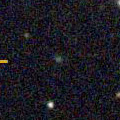
|
Now it is 16.8 mag (Nov. 4, ATLAS-HKO, Haleakala). It stays 17 mag for a while. In the Northern Hemisphere, it stays observable in good condition. It stays extremely low in the Southern Hemisphere.
Date(TT) R.A. (2000) Decl. Delta r Elong. m1 Best Time(A, h)
Nov. 25 4 51.82 41 42.6 5.779 6.694 156 16.7 0:40 (180, 83)
Dec. 2 4 48.82 41 46.4 5.759 6.693 159 16.6 0:09 (180, 83)
|
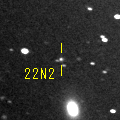
|
It is expected to brighten up to 11.5 mag in 2025 autumn, and it will be observable in good condition. Now it is 17.1 mag (Nov. 14, ATLAS Chile). It stays 16 mag for a while. It will be getting lower gradually after this, and it will be unobservable in January. But it will be observable again in March in the Southern Hemisphere.
Date(TT) R.A. (2000) Decl. Delta r Elong. m1 Best Time(A, h)
Nov. 25 20 43.91 -18 25.2 6.720 6.389 66 16.7 18:18 ( 31, 31)
Dec. 2 20 47.37 -18 8.9 6.779 6.346 60 16.7 18:18 ( 36, 28)
|

|
It brightened up to 14.1 mag in 2022 spring (Mar. 22, 2022, Chris Wyatt). Now it is 16.0 mag (Nov. 16, ATLAS Chile). Fading slowly. It will be getting lower gradually after this, and it will be unobservable in March.
Date(TT) R.A. (2000) Decl. Delta r Elong. m1 Best Time(A, h)
Nov. 25 1 37.12 -1 35.3 4.915 5.693 138 16.7 21:21 ( 0, 54)
Dec. 2 1 32.10 -1 14.4 5.047 5.740 130 16.8 20:48 ( 0, 54)
|

|
Very far object. Now it is 17.3 mag (Nov. 17, Jean-Claude Merlin). It stays 17 mag for a while. In the Northern Hemisphere, it is not observable now. In the Southern Hemisphere, it stays observable in good condition.
Date(TT) R.A. (2000) Decl. Delta r Elong. m1 Best Time(A, h)
Nov. 25 3 46.48 -77 20.9 10.403 10.313 82 16.8 23:27 ( 0,-22)
Dec. 2 3 29.90 -77 7.0 10.428 10.313 80 16.8 22:43 ( 0,-22)
|

|
Now it is 17.3 mag (Nov. 15, A. Diepvens). It stays 17 mag for a while. In the Northern Hemisphere, it stays observable in good condition. It locates somewhat low in the Southern Hemisphere. But it will become high in autumn.
Date(TT) R.A. (2000) Decl. Delta r Elong. m1 Best Time(A, h)
Nov. 25 4 58.10 37 15.7 4.260 5.194 159 16.9 0:46 (180, 88)
Dec. 2 4 54.44 36 44.5 4.219 5.174 164 16.8 0:15 (180, 88)
|
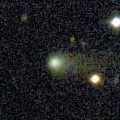
|
It brightened up to 13.9 mag in early 2023 (Jan. 21, Hidenori Nohara). Now it is 16.3 mag (June 17, Ken-ichi Kadota). It stays 17 mag for a while. In the Northern Hemisphere, it will be getting higher gradually. In the Southern Hemisphere, it is not observable now, but it will appear in December.
Date(TT) R.A. (2000) Decl. Delta r Elong. m1 Best Time(A, h)
Nov. 25 13 46.56 7 23.9 4.951 4.284 43 16.8 5:14 (279, 25)
Dec. 2 13 53.79 7 3.3 4.920 4.323 47 16.9 5:20 (283, 30)
|

|
It returned for the first time in 68 years. It will brighten up to 7.5 mag in 2024 summer. Now it is 17.5 mag (Nov. 14, ATLAS Chile). It will brighten rapidly after this. It stays observable in good condition. At the high light, it locates low in the Northern Hemisphere, or it is not observable in the Southern Hemisphere.
Date(TT) R.A. (2000) Decl. Delta r Elong. m1 Best Time(A, h)
Nov. 25 3 45.30 -21 9.6 2.297 3.102 138 17.1 23:28 ( 0, 34)
Dec. 2 3 36.40 -20 39.8 2.248 3.031 135 16.9 22:52 ( 0, 34)
|
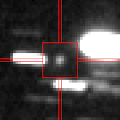
|
It is expected to brighten up to 12.5 mag in 2024 summer. Now it is 17.3 mag (July 28, ATLAS South Africa). Brightening slowly. In the Northern Hemisphere, it is not observable now. In the Southern Hemisphere, it will be getting higher gradually. Around the high light, it is observable in good condition in the Southern Hemisphere, but it locates very low in the Northern Hemisphere.
Date(TT) R.A. (2000) Decl. Delta r Elong. m1 Best Time(A, h)
Nov. 25 13 14.73 -52 37.1 5.047 4.406 45 17.0 5:14 (329,-11)
Dec. 2 13 25.72 -53 46.9 4.962 4.351 47 16.9 5:20 (332, -9)
|
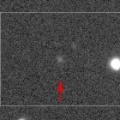
|
It will be observable at 15-16 mag from 2024 to 2025. Now it is 17.9 mag (Apr. 25, A. Diepvens). Brightening slowly. In the Northern Hemisphere, it stays observable in good condition. In the Southern Hemisphere, it will be getting higher gradually.
Date(TT) R.A. (2000) Decl. Delta r Elong. m1 Best Time(A, h)
Nov. 25 12 35.98 4 22.4 4.312 3.847 55 17.2 5:14 (294, 37)
Dec. 2 12 42.33 3 48.7 4.206 3.831 61 17.1 5:20 (301, 41)
|

|
Now it is 16.1 mag (Nov. 14, Toshihiko Ikemura, Hirohisa Sato). Fading slowly. It will be fainter than 18 mag in January. It stays observable in good condition.
Date(TT) R.A. (2000) Decl. Delta r Elong. m1 Best Time(A, h)
Nov. 25 3 33.04 4 8.6 2.202 3.157 162 17.2 23:16 ( 0, 59)
Dec. 2 3 28.56 4 4.3 2.241 3.171 156 17.2 22:44 ( 0, 59)
|

|
Now it is 16.7 mag (Nov. 13, Jean-Claude Merlin). It stays 17 mag for a while. It stays extremely low in the Northern Hemisphere. In the Southern Hemisphere, it stays observable in good condition.
Date(TT) R.A. (2000) Decl. Delta r Elong. m1 Best Time(A, h)
Nov. 25 5 6.63 -40 59.6 7.326 7.817 116 17.2 0:54 ( 0, 14)
Dec. 2 5 3.93 -41 5.5 7.301 7.792 116 17.2 0:23 ( 0, 14)
|
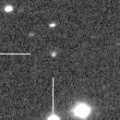
|
It stays 17 mag for a while. It locates somewhat low in the Northern Hemisphere. But it will become high in summer. In the Southern Hemisphere, it will be getting higher gradually.
Date(TT) R.A. (2000) Decl. Delta r Elong. m1 Best Time(A, h)
Nov. 25 12 38.82 -20 53.1 4.133 3.532 46 17.3 5:14 (313, 18)
Dec. 2 12 48.15 -21 47.7 4.051 3.519 51 17.2 5:20 (319, 21)
|
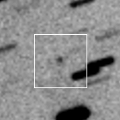
|
Now it is 16.9 mag (Nov. 12, ATLAS-HKO, Haleakala). It stays 18 mag for a while. In the Northern Hemisphere, it stays observable in good condition. In the Southern Hemisphere, it will be unobservable in December.
Date(TT) R.A. (2000) Decl. Delta r Elong. m1 Best Time(A, h)
Nov. 25 22 58.31 49 26.4 3.816 4.324 114 17.3 18:42 (180, 76)
Dec. 2 22 50.13 47 37.1 3.884 4.311 109 17.3 18:18 (172, 77)
|

|
Now it is 16.8 mag (Nov. 7, ATLAS Chile). Fading slowly. It will be fainter than 18 mag in January. It will be getting lower gradually. It was very faint as 21.5 mag in 2021. It seems to be bright temporarily in outburst.
Date(TT) R.A. (2000) Decl. Delta r Elong. m1 Best Time(A, h)
Nov. 25 21 21.30 -11 0.4 4.795 4.676 77 17.4 18:18 ( 24, 41)
Dec. 2 21 25.59 -10 41.0 4.914 4.691 71 17.5 18:18 ( 31, 39)
|

|
First return of a new periodic comet which brightened up to 10 mag in 2001. It is expected to brighten up to 12-13 mag from February to March in 2024. It will brighten rapidly after this. In the Southern Hemisphere, it will be getting lower gradually after this, and it will be unobservable in January.
Date(TT) R.A. (2000) Decl. Delta r Elong. m1 Best Time(A, h)
Nov. 25 23 11.63 -27 50.9 1.492 1.862 95 17.6 18:56 ( 0, 28)
Dec. 2 23 8.21 -23 28.5 1.522 1.808 89 17.5 18:25 ( 0, 32)
|
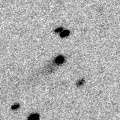
|
Now it is 17.0 mag (Apr. 11, Michael Jager). It stays 18 mag for a while. In the Northern Hemisphere, it stays observable in good condition. In the Southern Hemisphere, it will be getting higher gradually.
Date(TT) R.A. (2000) Decl. Delta r Elong. m1 Best Time(A, h)
Nov. 25 12 33.15 12 48.3 9.716 9.275 60 17.6 5:14 (286, 43)
Dec. 2 12 33.46 12 59.7 9.618 9.288 67 17.6 5:20 (293, 49)
|
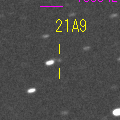
|
Now it is 18.3 mag (Nov. 13, Toshihiko Ikemura, Hirohisa Sato). It stays 18 mag for a while. It stays observable in good condition.
Date(TT) R.A. (2000) Decl. Delta r Elong. m1 Best Time(A, h)
Nov. 25 7 24.52 9 42.1 7.092 7.760 129 17.8 3:12 ( 0, 65)
Dec. 2 7 19.63 9 33.1 7.004 7.760 137 17.7 2:39 ( 0, 65)
|

|
Now it is 19.5 mag (Nov. 12, Toshihiko Ikemura, Hirohisa Sato). Brightening slowly. In the Northern Hemisphere, it stays observable in good condition. It locates somewhat low in the Southern Hemisphere.
Date(TT) R.A. (2000) Decl. Delta r Elong. m1 Best Time(A, h)
Nov. 25 7 32.93 31 54.9 1.100 1.904 131 18.0 3:20 ( 0, 87)
Dec. 2 7 38.21 32 46.3 1.024 1.871 137 17.8 2:58 ( 0, 88)
|

|
Now it is 18.8 mag (Nov. 14, Toshihiko Ikemura, Hirohisa Sato). It stays 18 mag for a while. It stays observable in good condition.
Date(TT) R.A. (2000) Decl. Delta r Elong. m1 Best Time(A, h)
Nov. 25 4 54.99 24 23.4 3.166 4.133 166 17.8 0:43 ( 0, 79)
Dec. 2 4 50.45 24 5.0 3.151 4.133 174 17.8 0:11 ( 0, 79)
|

|
It is expected to brighten up to 13 mag in early summer in 2024. Now it is 18.3 mag (Nov. 13, Jean-Claude Merlin). Brightening gradually. It locates somewhat low in the Northern Hemisphere. In the Southern Hemisphere, it stays observable in good condition. At the high light, it is not observable in the Southern Hemisphere, or it locates low in the Northern Hemisphere.
Date(TT) R.A. (2000) Decl. Delta r Elong. m1 Best Time(A, h)
Nov. 25 3 13.90 -47 48.0 2.392 2.894 110 18.0 22:56 ( 0, 7)
Dec. 2 2 59.45 -46 33.4 2.341 2.815 108 17.8 22:14 ( 0, 9)
|
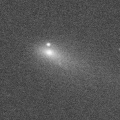
|
It brightened up to 12.8 mag in spring (Mar. 8, Taras Prystavski). Now it is 17.0 mag (Oct. 19, Ken-ichi Kadota). Fading gradually. It will be fainter than 18 mag in December. In the Northern Hemisphere, it stays observable in good condition. In the Southern Hemisphere, it will be getting lower gradually.
Date(TT) R.A. (2000) Decl. Delta r Elong. m1 Best Time(A, h)
Nov. 25 0 30.23 -4 54.3 2.279 2.931 122 17.9 20:14 ( 0, 50)
Dec. 2 0 30.46 -4 20.6 2.401 2.967 115 18.1 19:47 ( 0, 51)
|

|
It brightens up to 16 mag from January to February. Now it is 18.0 mag (Nov. 15, Ken-ichi Kadota). Brightening slowly. It stays observable in good condition.
Date(TT) R.A. (2000) Decl. Delta r Elong. m1 Best Time(A, h)
Nov. 25 8 54.36 11 11.6 1.474 2.025 109 18.1 4:41 ( 0, 66)
Dec. 2 9 0.79 9 5.5 1.378 1.994 114 17.9 4:20 ( 0, 64)
|

|
The cometary activity was detected by Masayoshi Yoshimi on Sept. 15. Now it is 16.0 mag (Sept. 15, Masayoshi Yoshimi). It will fade out rapidly after this. In the Northern Hemisphere, it stays observable in good condition. In the Southern Hemisphere, it is not observable now.
Date(TT) R.A. (2000) Decl. Delta r Elong. m1 Best Time(A, h)
Nov. 25 0 0.02 67 12.8 0.377 1.222 120 17.9 19:47 (180, 58)
Dec. 2 0 49.85 66 42.1 0.407 1.258 123 18.1 20:10 (180, 58)
|
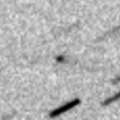
|
Now it is 17.2 mag (Nov. 13, Toshihiko Ikemura, Hirohisa Sato). It stays 18 mag for a while. It stays observable in good condition.
Date(TT) R.A. (2000) Decl. Delta r Elong. m1 Best Time(A, h)
Nov. 25 1 26.86 -2 52.9 2.056 2.847 135 18.0 21:11 ( 0, 52)
Dec. 2 1 23.90 -2 47.5 2.090 2.810 128 17.9 20:40 ( 0, 52)
|

|
It will brighten rapidly after this. It stays extremely low. It will brighten up to 13 mag in January. But it locates extremely low.
Date(TT) R.A. (2000) Decl. Delta r Elong. m1 Best Time(A, h)
Nov. 25 13 42.88 -18 2.1 1.860 1.155 32 18.6 5:14 (300, 10)
Dec. 2 14 13.32 -19 3.0 1.833 1.127 32 18.0 5:20 (301, 9)
|

|
Tiny member of Comet C/1988 A1 ( Liller )'s group. Now it is 17.5 mag (Nov. 17, Giuseppe Pappa). It will fade out rapidly after this. In the Northern Hemisphere, it will be getting lower gradually. In the Southern Hemisphere, it is not observable now.
Date(TT) R.A. (2000) Decl. Delta r Elong. m1 Best Time(A, h)
Nov. 25 19 29.23 21 57.2 0.542 0.917 66 18.8 18:18 ( 85, 48)
Dec. 2 19 6.56 24 45.4 0.679 0.875 60 19.1 18:18 ( 96, 39)
|
|
![]()
 C/2021 Y1 ( ATLAS )
C/2021 Y1 ( ATLAS ) C/2014 UN271 ( Bernardinelli-Bernstein )
C/2014 UN271 ( Bernardinelli-Bernstein ) C/2022 S4 ( Lemmon )
C/2022 S4 ( Lemmon ) 207P/NEAT
207P/NEAT C/2022 A3 ( Lemmon-ATLAS )
C/2022 A3 ( Lemmon-ATLAS ) (3200) Phaethon
(3200) Phaethon 199P/Shoemaker 4
199P/Shoemaker 4 C/2023 E1 ( ATLAS )
C/2023 E1 ( ATLAS ) C/2022 E3 ( ZTF )
C/2022 E3 ( ZTF ) 237P/LINEAR
237P/LINEAR C/2022 V2 ( Lemmon )
C/2022 V2 ( Lemmon ) C/2023 S3 ( Lemmon )
C/2023 S3 ( Lemmon ) P/2007 T2 ( Kowalski )
P/2007 T2 ( Kowalski ) 117P/Helin-Roman-Alu 1
117P/Helin-Roman-Alu 1 C/2022 QE78 ( ATLAS )
C/2022 QE78 ( ATLAS ) C/2021 S4 ( Tsuchinshan )
C/2021 S4 ( Tsuchinshan ) C/2022 N2 ( PanSTARRS )
C/2022 N2 ( PanSTARRS ) C/2020 Y2 ( ATLAS )
C/2020 Y2 ( ATLAS ) C/2019 E3 ( ATLAS )
C/2019 E3 ( ATLAS ) C/2022 U3 ( Bok )
C/2022 U3 ( Bok ) C/2020 S4 ( PanSTARRS )
C/2020 S4 ( PanSTARRS ) 13P/Olbers
13P/Olbers C/2023 C2 ( ATLAS )
C/2023 C2 ( ATLAS ) 65P/Gunn
65P/Gunn 170P/Christensen
170P/Christensen C/2022 R6 ( PanSTARRS )
C/2022 R6 ( PanSTARRS ) C/2022 T1 ( Lemmon )
C/2022 T1 ( Lemmon ) C/2022 U1 ( Leonard )
C/2022 U1 ( Leonard ) P/2023 M4 ( ATLAS )
P/2023 M4 ( ATLAS ) P/2001 Q6 ( NEAT )
P/2001 Q6 ( NEAT ) C/2020 F2 ( ATLAS )
C/2020 F2 ( ATLAS ) C/2021 A9 ( PanSTARRS )
C/2021 A9 ( PanSTARRS ) 227P/Catalina-LINEAR
227P/Catalina-LINEAR 404P/2020 M6 ( Bressi )
404P/2020 M6 ( Bressi ) C/2023 V4 ( Camarasa-Duszanowicz )
C/2023 V4 ( Camarasa-Duszanowicz ) 71P/Clark
71P/Clark 150P/LONEOS
150P/LONEOS 2019 AV4
2019 AV4 30P/Reinmuth 1
30P/Reinmuth 1 26P/Grigg-Skjellerup
26P/Grigg-Skjellerup C/2023 V5 ( Leonard )
C/2023 V5 ( Leonard )![]()


























































